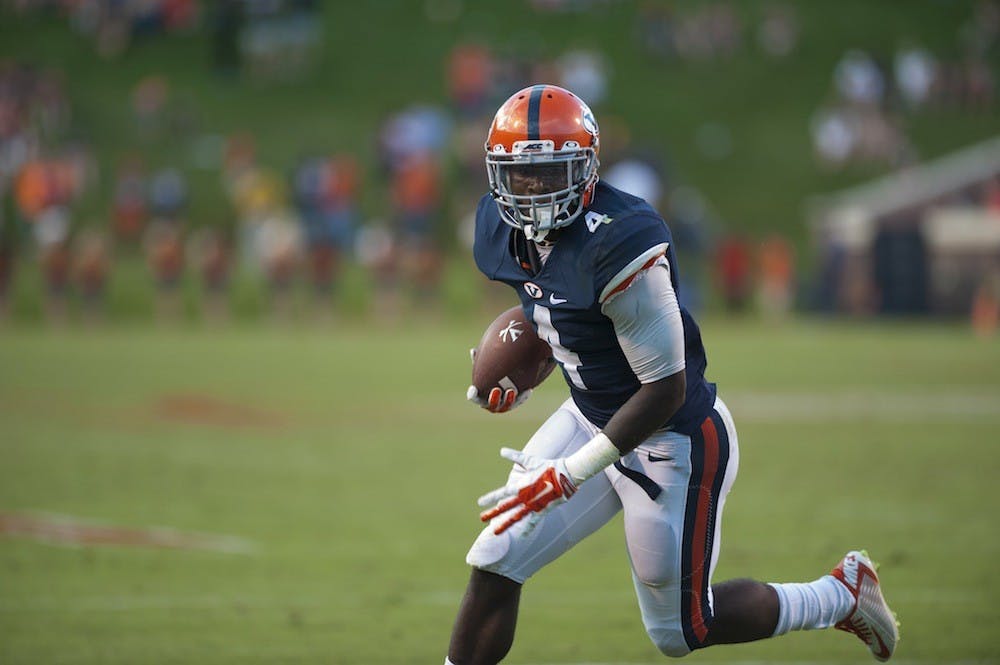A week ago, I wrote that this Virginia team could shake things up in the ACC if the Cavaliers ever put a complete game together. On Saturday, they did just that.
The defense forced five turnovers — pushing the total to 18 on the season — and gave up just 280 yards. They even scored before the offense.
On the other side of the ball, it took Virginia a quarter to get going — but when Matt Johns and company got rolling, they looked almost unstoppable. The sophomore — who started for the first time this year due to the injury Grayson Lambert sustained against BYU — passed for 266 yards and two touchdowns, and added another on the ground.
The real stars of the game, though, were the running back trio Kevin Parks, Taquan Mizzell and Khalek Shepherd. Each scored at least one touchdown and they combined for 269 total yards.
This committee of running backs seemed questionable at the start of the year. Luckily, Parks tends to get better as games progress; Mizzell and Shepherd often take carries away from the senior, hindering his progression. But as we’ve seen in the past several weeks, this method has made Virginia’s offense more dynamic than it’s been in the past few years.
Steve Fairchild's most impressive success this year is his use of Mizzell in a variety of creative ways. He can line up anywhere on the field and be effective. A popular play call on Saturday was sending Smoke in motion for a jet sweep — a nice change of pace from the usual between-the-tackles runs Virginia is so fond of.
Mizzell is probably the best athlete on the field at any given time, so getting him the ball more often is imperative if the Cavaliers are going to continue on this trajectory of success. He has shown this year he is a capable receiver out of the slot, which is really where he’s most effective.
While lining up in the slot gives Fairchild the option of sending Mizzell in motion for a sweep, it also allows for so much more. Motion not only helps Lambert or Johns see if the opposing defense is in man or zone coverage, but also opens Smoke up for quick passes to the flat and even facilitates sending him deep on a wheel route.
Also, Fairchild is a big advocate of developing a screen game. Having Mizzell in the slot opens makes bubble screens a constant option for the team. If I’m a Virginia coach, there is no one I’d rather have with the ball in space than Smoke.
All of this creates huge matchup problems for defenses because it forces either a linebacker or a safety to cover a superior athlete. The natural response to this is to play far off of Mizzell, which feeds perfectly into screen game. Conversely, defenses could switch to a soft zone, which should help establish the run and give Virginia’s true receivers the chance to take advantage of the added cushion.
On the flip side, Mizzell remains a solid running back fully capable of running between the tackles. He’s a completely different type of back than Parks and Shepherd, which forces defenses to adapt on the fly and potentially even forces substitutions.
Watching how the coaching staff chooses to utilize its trio of running backs has been enjoyable — because thus far, it’s worked quite well. There may be even more creative ways Mizzell can be used, but Fairchild has the right idea going forward.
Establishing the run is clearly the key priority of his offense, and that makes sense — especially given the lack of pass blocking experience on the offensive line (not to mention the inexperience of the quarterbacks). This team has shown it is capable of spreading the field, however — and this has translated to better results.







